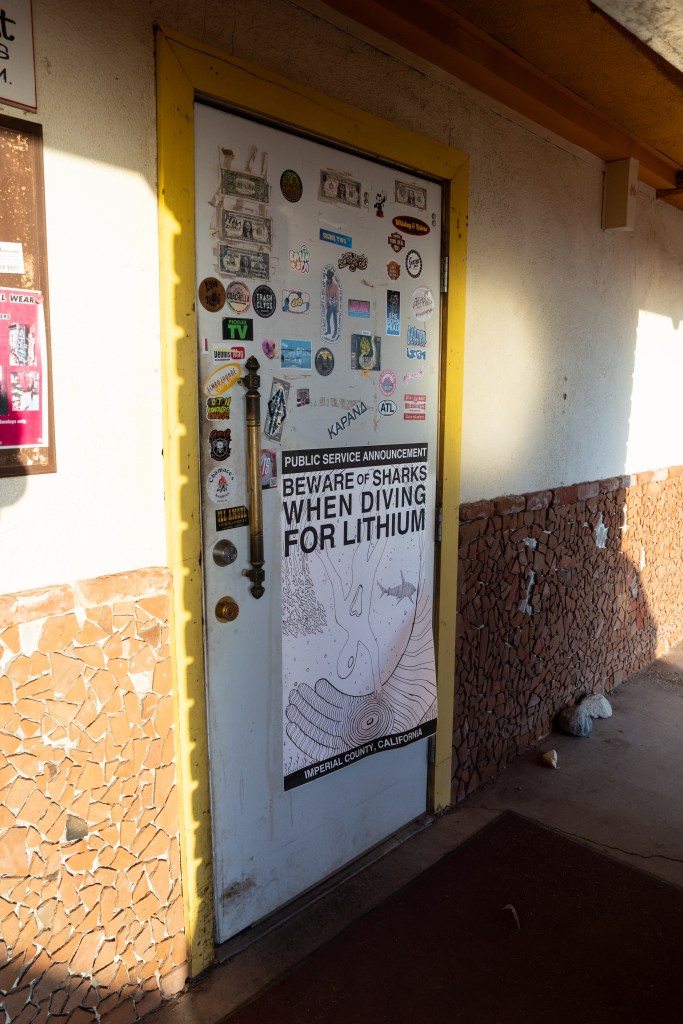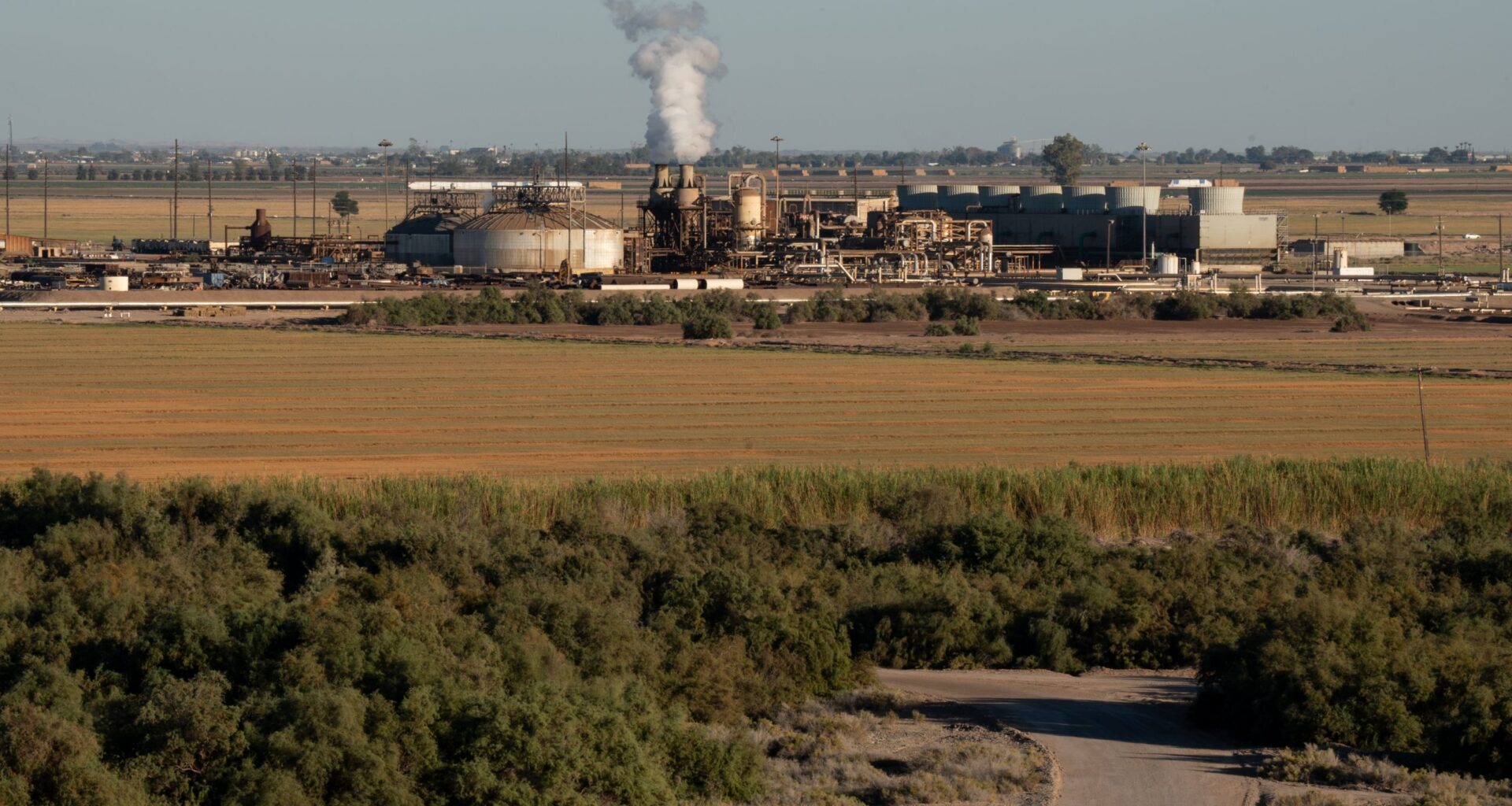Lithium has become a crucial commodity in the global transition toward green energy. With most of it mined and refined abroad, companies are racing to tap into a vast reserve buried deep under the Salton Sea.
A Superior Court judge says that the environmental review adopted by Imperial County for the region’s first commercial lithium extraction facility does not violate the California Environmental Quality Act, also known as CEQA, as petitioners claimed.
The decision follows months of anticipation as advocates, county leaders and lithium companies have watched to see how the court would impact the rollout of future projects slated for “Lithium Valley,” an area abutting the Salton Sea that the county designated for the lithium industry.
The lawsuit underscored the differences between Imperial Valley residents who want to see lithium profits turned quickly and those concerned that the race for profits will outpace long-term community and environmental concerns.
In the ruling, issued Thursday, Superior Court Judge Jeffrey Jones denied claims brought last year by two advocacy groups, Comite Civico del Valle and Earthworks, which have been tracking the county’s race to extract the valuable metal from vast stores of brine, deep under the Salton Sea. The metal is a crucial ingredient in batteries used for car batteries and electronics.
In their lawsuit, the groups said that the review for Hell’s Kitchen, the lithium facility proposed by the Australian company Controlled Thermal Resources, downplayed how much water would be needed for the project and did not adequately address air quality impacts. They also alleged that the report stopped short of hiring tribal monitors to consult on sensitive cultural tribal resources along the Southeast Lake Cahuilla Active Volcanic Cultural District.
The judge said an environmental review is “not required to (and should not) speculate about future environmental consequences of a project.” He said the Imperial County report adequately took into account environmental conditions at the time and potential impacts on water supply. He said that air quality impacts from the receding shoreline of the Salton Sea are speculative, and that the request for tribal monitors came beyond the 30-day deadline.
Luis Olmedo, Comite Civico del Valle executive director, said he was disappointed by the ruling, but that he and his coalition were prepared for it.
“CCV will exhaust all available legal and public policy channels, including consideration of appealing the trial decision, to ensure that the residents and environment of the Imperial Valley receive the highest threshold of protection,” Olmedo said.
The county and CTR, he said, can do more to reduce water use and protect tribal cultural resources by supporting tribes in their efforts to have some of the land in the lithium development area registered as a both a state and federally recognized cultural district.
Jared Naimark, the California Mining Organizer with Earthworks, backed Olmedo.
“A just transition to renewable energy requires that we don’t create new sacrifice zones for lithium mining,” Naimark said. “California has the opportunity to lead the way on more responsible lithium extraction by fully analyzing and mitigating the environmental impacts of Hells Kitchen and other Lithium Valley projects.”
Meanwhile county and industry leaders have welcomed the ruling, saying that the lawsuit has delayed “Lithium Valley” projects and search for funding which has yet to be secured.
Imperial County Supervisor Ryan Kelley, a vocal advocate of developing lithium extraction projects, celebrated the court ruling, saying projects can now move forward.
“Unfortunately, this lawsuit brought negative publicity to the Lithium Valley Project Area,” Kelley said.
Controlled Thermal Resources CEO Rod Colwell welcomed the ruling:
“We are encouraged by this positive outcome and look forward to moving ahead without delay,” he said.
“While this legal action impacted our progress in 2024, we remain highly confident in regaining the lost momentum and delivering the world’s first integrated geothermal lithium project to support clean energy independence in the United States.”

 A lithium poster hangs on the door to Reel In, a restaurant bar in Bombay Beach, a community in northern Imperial Valley bordering the proposed lithium fields on Jun. 26, 2024. (Philip Salata/inewsource)
A lithium poster hangs on the door to Reel In, a restaurant bar in Bombay Beach, a community in northern Imperial Valley bordering the proposed lithium fields on Jun. 26, 2024. (Philip Salata/inewsource) Lithium projects are slated for an area in the north end of Imperial County along the southeastern shores of the Salton Sea. At first, frontline communities were heedfully hopeful and wanted to see how the promise of jobs and revenue from a lithium excise tax could benefit them.
The hope turned sour when the county rolled out how it would distribute lithium funds. Advocates said the plan overlooked frontline communities.
The ruling is alarming to some members of the community, such as Calipatria resident William Cooper who heads an advocacy group in the north end called The Becoming Project.
The ruling reaffirms “that the powers that be will continue to ask the bare minimum of large corporations, conglomerates and counties,” Cooper said.
Eric Reyes of Brawley-based Los Amigos de la Comunidad said he was cautiously viewing this as an opportunity for locals and true community benefits.
“We are not positively sure all environmental protections are in place to mitigate all possible impacts,” Reyes added, “but we are willing to work through the next phase of the development and hold the developers and County accountable to those mitigation processes accepted by the courts.”
